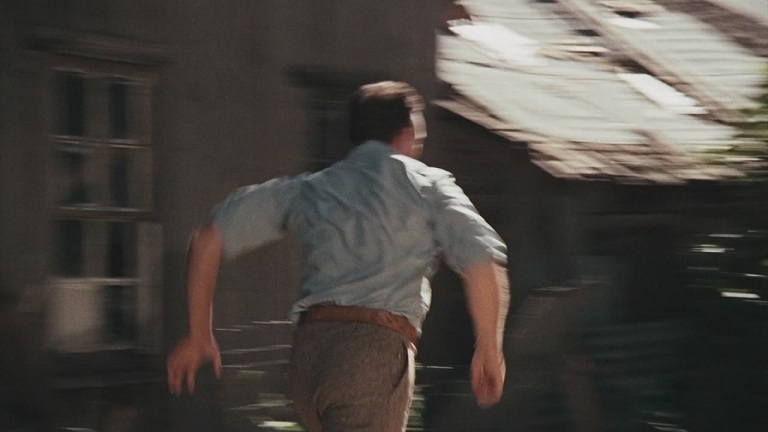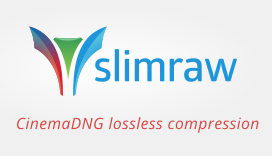Cinematic Look, Part 2: Frame Rate and Shutter Speed
In the first part of this series we addressed some of the cinematic properties, which follow from the size and proportions of the capturing frame, be it film or digital. This second article is concerned with the temporal aspects of the cinematic look. More precisely, the characteristics of the image following from specific frame rate and shutter speed choices. For decades these characteristics have been almost unchanging, with deviations only used for special effects. This constancy has made them perhaps the most defining features of the cinematic look.
Film frame rate
The frame rate of the motion picture specifies the frequency at which sequential frames are captured. In a film camera, this is the number of frames per second that pass through the camera gate and get exposed. In the days of silent film both motion picture cameras and projection cameras were hand-cranked. Cameramen took pride in their ability to crank at a steady pace. Common knowledge is that 16 frames per second (fps) was the prevalent rate of cranking. But this is not exactly so. Cranking speed varied wildly between 10 and 26 fps. Cranking speed varied even across the reels of a single movie. Projection was an art in itself. The projectionist had to watch the action closely and correct cranking speed when needed. On top of that, theater owners sometimes required projection speed to be increased in order to squeeze more showings in a given time frame – a practice that could lend a slapsticky feel even to the most serious drama.
Standardization came with the arrival of sound and the need to have sound in sync with picture. And ever since, the accepted standard for cinema frame rate is 24 fps. There wasn’t anything special about this number, other than being the approximately average projection speed from a bunch of sampled theaters in 1926. Nevertheless, it has come to define some of the prominent characteristics of the cinematic look.
Shutter angle and shutter speed
The second temporally important property is the period of exposure for each frame. In a motion picture film camera the negative is not exposed continuously. A window of time, with light shut out, is needed in order for the sprocket wheel to pull the next frame in the film gate and prepare it for exposure. In a film camera this is what the rotary shutter does.
The rotary shutter is an arc shaped mirror (called “half-moon”) that rotates in front of the gate. Its pivot is placed either beside or underneath the gate. When the gate is covered, the mirror serves to reflect the image from the lens into the ground glass, so that the cameraman can see it in the viewfinder. At the same time the next frame is being loaded into position behind the shutter. When the shutter is rotated away from the gate, light exposes the negative. The exact shape of the arc defines the shutter angle. The shutter angle is specified in degrees and describes the size of the cut out part of the shutter disc.
In simple cameras the shutter is shaped as a semicircle (and the shutter angle is 180 degrees). In more advanced cameras the shutter angle (and thus the shape of the shutter) can be changed. The shutter rotates with a constant speed and makes one revolution per frame. So for the standard cinema frame rate of 24 fps that means 24 revolutions. Bigger angle means longer exposure time. Smaller angle means shorter exposure time. In photography and cinematography the exposure time is often called shutter speed, because the exposure time is the time the shutter stays open per frame. The shutter angle can easily be made small, but large angles are harder because of the need for next frame advancement.
There is another popular rotary shutter type, called “butterfly”. It consists of two segments (90 degrees each, for 180 degree shutter angle) positioned opposite of each other. Butterfly shutters rotate at half the speed of a half-moon shutter. That is, a full revolution exposes a couple of frames. Panavision Panaflex cameras usually have this design.
Early cameras usually had a fixed shutter angle. The angle itself varied between cameras. For example, Bell & Howell Eyemo 71k used a 160 degree shutter; the 16mm B&H Filmo 70 DR used a 204 degree shutter. Eventually a shutter angle of 180 degrees ended as standard or “normal”. For a frame rate of 24 fps this equals shutter speed of 1/48 sec. The shutter angle can be converted to shutter speed with the following formula:

The following table conveniently lists some useful shutter angles converted to shutter speeds.
| Shutter angle | Shutter speed |
|---|---|
| 45 | 1/192 |
| 60 | 1/144 |
| 90 | 1/96 |
| 135 | 1/64 |
| 144 | 1/60 |
| 160 | 1/54 |
| 172.8 | 1/50 |
| 180 | 1/48 |
| 270 | 1/32 |
| 360 | 1/24 |
Motion blur and strobing
There are a couple of artifacts that arise from the rotary shutter and the 24 fps frame rate.
As the camera only ever sees half of the time (for a typical 180 degree shutter), it doesn’t capture the scene continuously. This means that fast moving objects, and especially objects moving across the frame, will exhibit jerky movement. This is called strobing. The defect is also very noticeable during pans.
The other artifact is also related to motion. Because of the relatively slow shutter speed (1/48 sec for 180 degree shutter angle and 24 fps), fast moving objects blur in the frame, because the longer the exposure, the more movement is captured. This is what we call motion blur. Note that while strobing is in essence an artefact related exclusively to the no full time shutter, motion blur results from the (relatively) long exposure of each frame.
Smaller shutter angles (shorter exposure) exhibit more pronounced strobing effects. Bigger shutter angles (longer exposure) increase motion blur. Faster frame rates can smooth out the perception of strobing, even with shutter angles smaller than 180 degrees. Faster frame rate also decreases captured motion per frame and decreases motion blur per frame. Note that small variations in shutter angle (and shutter speed) are imperceptible for most of the audience. Most people won’t notice any difference between a 180 degree shutter angle (1/48 sec shutter speed) and a 144 degree (1/60 sec shutter speed).

Top: 180 degree shutter will produce typical motion blur and strobing. Middle: decreasing shutter speed increases blur and decreases strobing. Bottom: increasing shutter speed decreases blur and increases strobing.
Motion blur and strobing are the main ingredients of what people call the dream-like effect of cinema. They set apart the cinematic image from the crisp and fluid reality and reinforce the unreal feel of cinema. This makes them an important characteristic of the traditional cinematic look.
Digital cameras
Artificial light varies in intensity depending on voltage. For mains AC powered lights voltage changes polarity according to frequency (100 times for 50 Hz, 120 times for 60 hz). This causes the light to flicker. Human eyes usually don’t see it but light flicker may interfere with film and video recording. This is more noticeable with discharge type lights without electronic ballasts. Incandescent lamps are less prone to flicker because they don’t cool much between pulses; and more so for powerful tungsten lamps. To minimize flicker under artificial light shutter speed can be adjusted depending on the specific mains frequency. That’s 60 Hz in USA and 50 Hz in Europe. So the flicker free shutter speeds closest to the 180 degree shutter are 1/50 sec (for Europe) and 1/60 sec (for USA). For 24 fps that will be 172.8 and 144 degree shutter angle respectively.
In digital video cameras (and DSLRs) there is no real need for a rotary shutter as there is no film negative that needs moving around. Nevertheless, some high-end digital cinema cameras like the Arri Alexa Studio and the Sony CineAlta F65 use rotary shutters to closely simulate the exposure process of film cameras while letting light on the sensor. But the vast majority of digital cameras only have electronic shutters. The camera simply reads out the sensor (or parts of it, for CMOS sensors) simultaneously ending its exposure and resetting it for the next frame.
One advantage of the electronic shutter is the ability for full time exposure (or 360 degree shutter angle equivalent). Rotary shutters need to be closed for some time after each exposure so that the sprocket wheel moves the next negative frame into position. No such movement is necessary in digital cameras. This allows for exposure times as low as 1/fps seconds. A disadvantage is the jello effect (image skew) that may happen with fast pans or fast moving subjects. This is a characteristic of the rolling shutter – typical for CMOS sensors – and is the result of partial sensor readout: parts of the sensor continue exposing while other parts are being read. High-end sensors with their fast readout times tend to minimize this defect.
Setting the digital camera to 24 fps and 1/48 sec shutter speed emulates the way film cameras work pretty close. Some digital cameras (especially DSLRs) don’t have an option for 1/48 sec. But setting the camera to a shutter speed of 1/50 sec will give results virtually indistinguishable from 1/48 sec.
The higher frame rate debate
Recently there has been a push towards higher frame rates, especially in connection to 3D movies. Peter Jackson is shooting The Hobbit in 48 fps and James Cameron will allegedly shoot Avatar 2 and 3 in 60 fps. The reasoning behind this is that higher frame rates result in more fluid and crisper image compared to 24 fps and the typical 180 degree shutter angle. This proposed change has been met with polarized reactions. Many find this image bland, TV-like and lacking the dramatic feel of 24 fps (at 180 degree shutter). Nevertheless, a higher frame rate will probably be accepted as standard alongside 24 fps. If high frame rates take off this may lead to a shift in perception about what is considered cinematic in terms of temporal characteristics. But for now, 24 fps and a 180 degree shutter angle define the traditional cinematic look. This is the look games (in cutscenes) and video emulate when trying to be cinematic. You can read more in the articles on high frame rates and 3D movies and frame rate as artistic choice.
The next part of the Cinematic Look series is on Dynamic Range.




Hi, thanks for the information. The only thing that confuses me is that if you set your shutter speed to 1/50 for 24fps, surely you are limiting your control over depth of field. What if you want a nice blurry background but the larger aperture requires a shorter shutter speed?